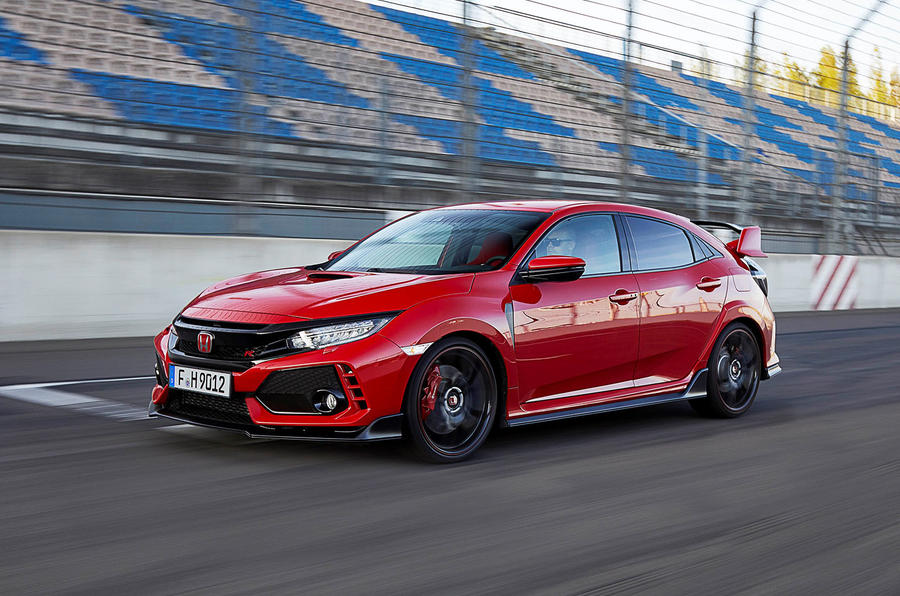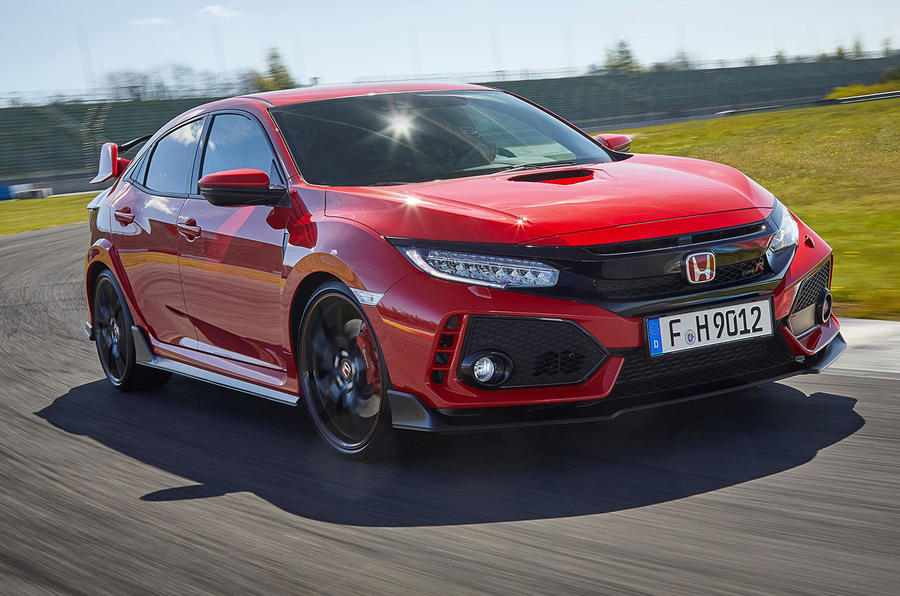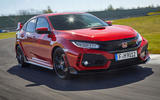What is it?
This is the new Honda Civic Type R, as you can probably tell from the tremendously large rear wing and the fact that it looks like a selection of power bulges haphazardly applied to a vaguely Honda-shaped hatchback.
What that becomes, though, is the most powerful front-drive hatchback around, with 316bhp. By conventional thinking, that's the sort of power you’d put through all four wheels. Not so Honda, which has recently made setting the front-drive production car lap record at the Nürburgring its ‘thing’; it did it with the previous-generation Type R and has done so again, so it says, with this, going around the Nordschleife in 7min 43.8sec, seven seconds quicker than the previous Civic Type R. The new car's lap time is very brisk, all things considered. And although doing that doesn’t necessarily equate to creating a terrific hot hatchback for the road, it fairly guarantees it will have impressive performance credentials.
I won’t dwell on the car's looks, but the short of it is that I’ve put pictures of the Type R on social media and the general reaction, rather than the usual “Is it any good?”, is “Holy moly, even that car’s mother would turn away from it”. There’s reason behind the appearance, though. The rear wing and underbody give it positive downforce, which is unique in the class, according to Honda.
The body itself has a longer wheelbase than the previous-generation Civic, while relocating the fuel tank from beneath the front seats to beneath the rears means that the driver sits 50mm lower than before. The centre of gravity is lower overall, too. Some bonding rather than spot welding means the body-in-white is 16kg lighter and 38% stiffer than the previous Civic’s, but the most significant mechanical change is that there’s no longer a torsion beam rear axle. Instead, the latest Civic gets a fully independent, multi-link set-up.

At the front there are MacPherson struts but, as is sometimes the way with really powerful front-drive hatches, they’re dual-axis ones. Some manufacturers give this set-up different names – Ford called it the RevoKnuckle, Vauxhall/Opel the HiPer Strut.
On a conventional strut, the whole strut turns when steered, which means there’s a large distance between the centre of the driven wheel and turning axis, across which distance the wheel torque acts, and can corrupt the steering. The dual-axis strut puts the wheel carrier on a separate knuckle, and only that part turns, making the turning axis much closer to the wheel centre. The result is a bit like pushing a door near the hinge rather than the handle: the force acts over a shorter distance, therefore the same effort moves the door less. And in this case, hey presto: less torque steer.
































Join the debate
Add your comment
Total failure in Indy racing?
Reliability
Menders required